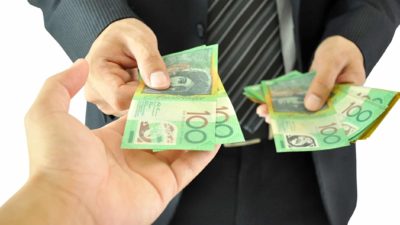Commonwealth Bank of Australia (ASX: CBA) is one of the biggest profit generators in Australia. It brings in an enormous amount of revenue and cash flow for investors – in FY23, it generated roughly $10.2 billion of net profit after tax (NPAT) on a cash basis from its continuing operations.
A large majority of the operating income that the big ASX bank makes is from loans. In the 2023 financial year, it made $23 billion of net interest income and $4.2 billion of other operating income. In total, the bank made $27.2 billion of operating income but only made $10.2 billion of cash net profit.
Where does the money go?
Shareholders ended up with $37.3 from $100 of operating income generated.
There are three key categories that CBA told investors about (and I have rounded the dollar amounts).
One of the three is that it has to pay a sizeable amount of its cash profit to the Australian Tax Office (ATO) in the form of corporate tax. Its tax bill was $4.1 billion of income tax, though this is useful for most Aussie investors because the tax paid is then turned into franking credits. CBA sends roughly $15 of $100 operating income to the tax office.
Second is the loan impairment expense, which relates to CBA's loans that have gone bad or it thinks might go bad. CBA has to book an expense for an impairment expense on its accounts, which are increasing following the significant rise in interest rates. The loan impairment expense in FY23 was $1.1 billion, or approximately $4 of $100 of operating income.
Third is the bank's operating expenses. This is the biggest expense category coming in at $11.86 billion, which is approximately $43.5 of the $100 operating income. This includes items like staff expenses ($7.2 billion), occupancy and equipment ($950 million), IT ($2 billion), travel, marketing and so on.
What does CBA do with the profit?
Some of the cash is retained for the ASX bank share to re-invest for longer-term growth such as new technology, marketing and so on.
A majority of the cash is sent to shareholders in the form of dividends and occasionally a share buyback.
CBA reported that it generated earnings per share (EPS) on a cash basis of $6.015 in FY23. It decided to pay an annual dividend per share of $4.50 per share, which translated into a dividend payout ratio of 74%. In other words, CBA shareholders saw just over a quarter of the operating income turn into a dividend.









